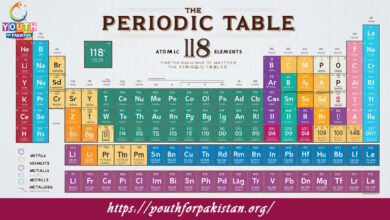Covalent Radii MDCAT Quiz: It forms covalent bonds with another atom. The covalent radius is defined as half the distance between the nuclei of two identical atoms that are covalently bonded. Understanding covalent radii is important to answer questions in the MDCAT Quiz because it helps in predicting bond lengths, molecular structures, and behavior of elements in covalent bonding.
H2: Trends in Covalent Radii
Covalent radii follow general trends in the periodic table. Going across a period from left to right, the covalent radius decreases. This occurs because the nuclear charge increases and, therefore, pulls the electrons toward the nucleus more strongly, making them closer to the nucleus. In effect, though the number of electrons increases, yet the size of the atom decreases. When you go down a group, the covalent radius increases. This results from the addition of electron shells, placing the outermost electrons farther from the nucleus and partially neutralizing increased nuclear charge. In addition, there is an increased shielding effect by the inner electron shells as you move down a group.
H3: Quiz on Covalent Radii
The MDCAT Quiz on covalent radii aims to test a student’s understanding of the concept of covalent radii in various contexts. Students will have the task of comparing covalent radii of atoms of different elements, making predictions of trends within periods and groups, and illustrating how covalent radii provide insight into bond formation and molecular geometry. These practice questions will make the student much more confident and prepared for the final MDCAT exam when answering questions that pertain to atomic and molecular size.
0Get Your Username and Password for MDCAT Tests
Sign Up Now
H3: Free Flashcard for Covalent Radii
Free Flashcards on this topic will help MDCAT students reinforce their understanding of covalent radii. The flashcards summarize the major trends in covalent radii and their implications in chemical bonding. Going through the flashcards regularly will enable one to easily recall important concepts and apply them effectively during revision. This tool aids in solidifying the understanding of covalent radii and hence saves one from the agony of facing a question related to this topic in the MDCAT exam.

The covalent radius generally ________ as you move down a group in the periodic table.

The covalent radius of an element increases as its ________ number increases.

The covalent radius of a non-metal is generally ________ than that of a metal in the same period.

Among the elements C, Si, and Ge, the element with the smallest covalent radius is ________.

The covalent radius of an element is ________ in the case of a highly electronegative element.

The covalent radius of an element typically ________ as its atomic number increases across a period.

The covalent radius of chlorine (Cl) is ________ than that of bromine (Br).

The covalent radius of fluorine (F) is ________ than that of iodine (I).

The covalent radius of an element is affected by the ________ of the element.

The covalent radius of an element ________ as its electronegativity increases.

The covalent radius of an atom is directly related to the ________ of the atom.

The covalent radius of carbon (C) is ________ than that of sulfur (S).

The covalent radius of an element ________ when the element forms a cation.

The covalent radius of a halogen (e.g., Cl) is ________ compared to a noble gas (e.g., Ne).

The covalent radius of an element increases as the ________ of the atom increases in a group.

The covalent radius of oxygen (O) is ________ than that of nitrogen (N).

The covalent radius of an atom is generally ________ than its ionic radius.

The covalent radius of an element ________ as the number of electron shells increases.

The covalent radius of elements in period 3 ________ as you move from sodium (Na) to chlorine (Cl).

The covalent radius of an element ________ as its atomic mass increases.

The covalent radius of an atom typically ________ as its nuclear charge increases across a period.

The covalent radius of an atom is determined by the distance between the ________ in a covalent bond.

The covalent radius of an element is smaller for a ________ charged atom than for a neutral atom.

The covalent radius of elements with similar electron configurations will ________ each other.

The covalent radius of an atom increases as the ________ of the nucleus decreases.

The covalent radius of a noble gas is ________ compared to a halogen in the same period.

The covalent radius of carbon (C) is ________ than that of oxygen (O).

The covalent radius of an atom increases as the ________ of the atom decreases.

The covalent radius of an element is determined by the ________ of the atomic orbitals involved.

The covalent radius of an atom is typically measured in units of ________.
Experience the real exam environment with our expertly designed collection of over 25,000 MCQs MDCAT Mock Tests.
View Your Dashboard







